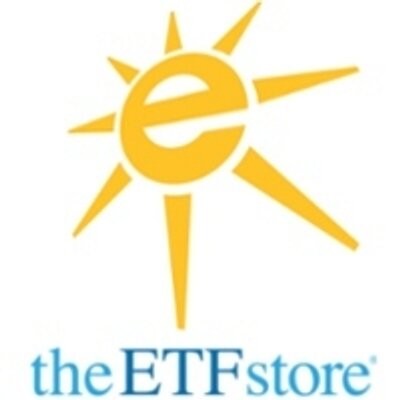The ETF Store
Post on: 2 Август, 2015 No Comment

Investing in Commodities Using ETFs
January 13th, 2012 by Tom Telford
Do you have commodities in your investment portfolio?
Commodity investing seems to be all the rage these days. Before adding commodities to your investment portfolio, you should answer two questions. First, why invest in commodities? Second, what is the best way to invest in them?
What is a commodity? A commodity is simply a good or service that is not readily distinguishable from another of its type. For example, gold is a commodity. One ounce of gold is pretty much like every other ounce of gold; the same with a gallon of gasoline, a barrel of oil, a pound of copper or a pound of steak. Many of the things we buy, use, consume and wear in our daily lives are commodities or are derived from them. Cotton is used to make the clothes we wear. Gasoline fuels our cars. Coal and natural gas heat and cool our homes.
Just as you can buy and own a share of stock or a bond, you can also buy a commodity. Commodities do not pay a dividend or pay interest, so the return on your investment is solely dependent on the change in the price of that commodity. Since they are commodities, their price is determined by the balance of supply and demand. If more people demand a commodity at a price than can, or will, supply it at that price, then the price of that commodity will rise, and vice versa.
Why invest in commodities at all?
There are three broad reasons:
1) Diversification Commodities are a separate asset class. An asset class is simply an asset that moves in price differently than another asset. Though the price of commodities can be volatile and risky, they often perform differently from stocks and bonds. Because they perform differently, combining commodities into a portfolio of stocks and bonds will likely lower the volatility and risk of your overall portfolio and deliver better risk-adjusted returns over time. Someone called diversification the only free lunch in investing. Adding commodities to your portfolio will typically increase its diversification.
2) Hedging – Since your returns from owning commodities depend on the change in the price of that commodity, commodities make good inflation hedges. As inflation drives up prices, the prices of commodities also increase, which increases the value of your investment. It is important to note that not all commodities respond the same way to inflation, so this hedge is best done with a basket of various commodities.
While commodities are good inflation hedges, they are also hedges against currency devaluation. If the US dollar weakens against other currencies, commodities from other countries will increase in price in terms of US dollars. For example, if the US dollar weakens against the Mexican peso by 10%, then Mexicans will demand roughly 10% more US dollars for a barrel of oil. In this way, owning commodities is a form of insurance for if the US dollar weakens against other currencies.
3) Speculation – There has been much press about the rapid growth of many developing nations, chief among them are China, India, Brazil and Russia. As those countries develop, they are building infrastructure which uses industrial metals like copper, iron and steel. As the middle class in those countries grows, the demand for a better diet increases, which in turn increases demand for agriculture commodities. The middle class also buys more cars, which increases demand for the metals needed to build the cars and for gasoline to fuel the cars. They are also able to spend more to heat and cool their homes, which increases the demand for coal. That growing middle class also wants to dress nicer, which means more clothes and jewelry.
You get the picture. The growth of the middle class in many developing countries has dramatically increased the demand for many commodities. Supply has increased for some commodities, but not at the same pace as the increase in demand. Accordingly, the price of these commodities has increased for much of the last decade. You might speculate in commodities if you think that these developing countries will continue to grow and increase their demand for commodities at a faster pace than the supply of those commodities can be increased.
If you decide that commodities are, in fact, an investment you want to include in your portfolio, you need to determine the best way to invest in them.
So how do you invest in commodities?
There are several ways:
1) Futures – A futures contract is simply the right to receive a physical commodity at some point in the future. You pay the futures price now for delivery in the future. Farmers sell futures contracts to lock in the price of their crops. Food companies like Kellogg buy futures to lock in the price they will pay for their raw materials. Speculators buy or sell futures in expectation that prices will go up or down in the future. For most investors, however, futures are not the best way to invest in commodities. First, futures use leverage which means you can lose more than your initial investment. Second, you would have to buy many different futures contracts to buy a basket of commodities, which means you need a large investment account. Third, futures contracts expire, so you would have to regularly buy and sell contracts to hold your investment.
2) Stocks – you can buy shares of companies that are involved in the commodity, usually producers of that commodity. For example, you could buy stocks of gold miners to get exposure to gold. A gold miner’s earnings will increase as the price of gold increases. However, owning stock in companies exposed to a commodity is an imperfect way to invest in the commodity because the price of those stocks will also fluctuate as a result of many factors unrelated to the price of the commodity itself, such as general stock market conditions, management’s ability to effectively manage the company, and the competitive environment impacting the industry in which the company competes. These factors can cause the value of your investment to go down even when the price of the actual commodity goes up.

3) Mutual funds – most mutual funds dedicated to a commodity simply own the stocks of the companies involved in that commodity as we discussed above. A few, but not many, mutual funds invest more directly through futures contracts. In addition, because of the way mutual funds work, you will usually receive capital gain distributions each year from your mutual fund investment. As a result, you may pay taxes each year on the investment even when the value of your mutual fund doesn’t go up.
4) Exchange Traded Funds (ETFs) – The potential advantages of ETFs over mutual funds has been well documented. ETF’s trade throughout the day like stocks and represent an investment in an underlying portfolio like a mutual fund. They combine the advantages of mutual funds with the freedom to buy and sell when you want to without the tax disadvantages of mutual funds (e.g. capital gains distributions). There are well over 100 different ETFs that provide investment exposure to commodities which increases the likelihood of finding one that suits your investment needs.
Why might ETFs be the best way for many investors to invest in commodities? First, with the variety of ETFs that invest in commodities, it is easier to find one or several that best suit your individual investment needs. Second, one ETF can give you broad based exposure to commodities. If you chose futures or stocks to invest in commodities, you would need to purchase and manage a significant number of securities, which increases your costs and the amount of time spent managing your investments. Third, compared to mutual funds, ETFs are generally more flexible, liquid and cost effective.
While we think that ETFs are the best way to invest in commodities, there a few issues to consider. With over 100 ETFs devoted to commodities, there are likely to be some that are better for your individual situation than others.
There are four broad types of commodity ETFs:
1) ETFs that attempt to track the price of a commodity or a basket of commodities through futures contracts. The advantages of these ETFs are that professionals manage the futures contracts and you cannot lose more than your initial investment. The disadvantages are tracking error (due to the way futures contracts work, the price of the ETF can sometimes not track precisely the cost of the underlying commodity), costs to manage the futures contracts and tax structure. Many of these are structured as limited partnerships, so investors are responsible for paying tax on their portion of the capital gains regardless of whether the investor sold shares in the ETF. These capital gains and interest income are reported on form K-1, which could have tax implications for some investors.
2) ETFs that own the underlying commodity. For these ETFs, ownership of the ETF actually represents an ownership interest in a fractional amount of that physical asset. For example, when an investor owns the SPDR Gold Trust ETF (ticker symbol: GLD) the investor directly owns physical gold stored in a vault in London.
3) ETFs that own the stocks of companies involved in the commodity. An example is the Market Vectors Gold Miners ETF (ticker symbol: GDX), which owns shares of various companies that mine and sell gold. As discussed above, owning commodity related stocks are an imperfect way to invest in a commodity, but a stock-based ETF is a low cost, tax efficient, professionally managed vehicle for the investment. This saves the investor from the investment and resources needed to analyze stocks, and eliminates or reduces the costs and taxes related to a mutual fund. For some commodities, a stock-based ETF is the most efficient way to get exposure to that commodity.
4) Finally, there are ETNs or exchange traded notes. ETNs are non-interest paying debt instruments that track a specific price index. The advantage of ETNs is that your investment return matches that of a price index of that commodity or basket of commodities minus the management fee. Taxes are based on when you sell the ETN. The disadvantage of an ETN is that there is a risk, usually very small, that the issuer could default on the debt.














